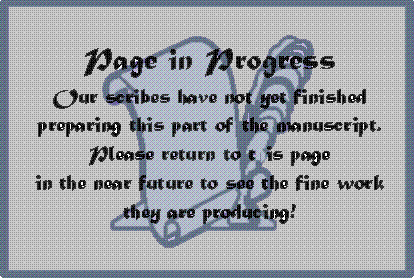Topics for Presentations, Discusssion or Papers
Write about something important in this poem. Write about it in a way that is unified and is interesting--that is, enlightening--for your reader.
It might seem at first glance as though Beowulf were merely a gory, action-packed celebration of physical strength.
However, the work contains many references to wisdom, perception, decision-making, and moral rectitude. Survey these, select
instances that seem important to you, and explain the relationship between them and some of the more physical motifs in the work.
Examine and discuss how the poet makes use of imagery involving heat or cold, light or dark, blood and gore, or water (choose one). Explain how this imagery enhances the poem and its meaning.
Examine and discuss the relationship between Beowulf and Hrothgar. Compare and contrast the two or explain the ways they are important to each other or to the work as a whole.
Examine the words, actions, and description of the female characters in the poem. Explain their role in the society and their diverse ways of responding to these roles.
Examine and explain the poet's assumptions about the sexes as they are found in the monsters as well as in the human characters.
The poem Beowulf is set in a period earlier than that in which it was written. However, it also refers to yet earlier periods. Explain the importance of historical memory in this poem.
Specify and discuss the significance of a mythic motif or some mythic motifs that you find in this poem.
Explain how the poem's age, the condition of the manuscript, and the work of the translator affect our reading of the poem.
Discuss the position of human beings in relation to society, family, nature, and the supernatural as shown in this poem, to promote the society's values, and to entertain.
Analyze a character's actions and explain how they do or do not meet the standards of virtue presumed or expressed by the poet. You may also, if you wish, evaluate actions or the poet's standards according to your own standards, but you must defend your evaluation.
Explain an interpretation of Bewoulf set forth in a scholarly criticism, and then refute or defend that interpretation. However, your rebuttal or defense must be supported by evidence from the poem, and a defense must include significant evidence beyond that presented in the original criticism. For an example of this type of dialogue, read the articles by Tolkien and by Sisam.
Make and defend with details a judgement about the poem's treatment of alcohol, of violence, or of vengeance.
Compare and contrast two different translations of Beowulf

Bibliography of related fiction, non-fiction, and film or video works is coming soon.
See also bibliography of works consulted in preparing this web site, Site page.

